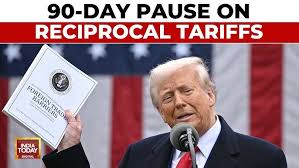Understanding the Power Behind Protest Signs 2025
In 2025, protest signs have evolved far beyond cardboard and markers—they’ve become a global symbol of digital-age activism, cultural expression, and political identity. When we talk about “protest signs 2025,” we’re not just referring to slogans on sticks; we’re talking about powerful visual tools that shape public opinion, go viral online, and often define entire movements.
Whether it’s the fight for climate justice, human rights, or economic reform, protest signs remain the simplest yet most impactful way for people to make their voices seen as well as heard. From the streets of Washington D.C. to the avenues of Berlin, from university campuses to virtual rallies, the art and message of protest signs continue to adapt to new media, technologies, and generations.
In this comprehensive article, we’ll explore:
- The evolution and history of protest signs.
- The top trends shaping protest signs in 2025.
- How activists use design, humor, and technology to amplify their voices.
- Practical tips for creating your own impactful and safe signs.
- And what the future of activism looks like in an era of AI, digital media, and mass mobilization.
By the end, you’ll understand why protest signs 2025 represent more than slogans—they’re the heartbeat of democracy and collective expression.
What Are Protest Signs? A Quick Definition & History
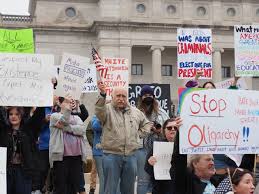
What Are Protest Signs?
A protest sign is more than just a physical object — it’s a visual declaration of belief, a message condensed into a few words and displayed publicly to express dissent, demand change, or show solidarity. In 2025, protest signs come in many forms:
- Traditional signs – made of cardboard, poster board, or cloth with handwritten or printed slogans.
- Digital protest signs – displayed on LED screens, projections, or even mobile devices during rallies.
- Virtual signs – used in online protests, social media campaigns, or digital avatars during virtual marches.
At their core, protest signs are communication tools — simple yet effective mediums that turn individual opinions into collective visibility. They transform the abstract (“freedom,” “justice,” “rights”) into something tangible, portable, and memorable.
As media scholar Stephen Duncombe once said, “Protest is performance, and protest signs are its props.” They give movements identity, coherence, and visibility — qualities that are essential in today’s image-driven society.
A Brief History of Protest Signs
The use of protest signs dates back centuries, evolving alongside the history of human expression and social change. Let’s trace their remarkable journey:
1. Early Beginnings
The earliest versions of protest signs can be traced to medieval Europe, where peasants and workers carried banners during uprisings, demanding fair wages or protesting feudal lords. Similarly, ancient civilizations used symbolic imagery on flags and carvings to voice rebellion or allegiance.
2. The Industrial and Political Age
By the 19th century, with the rise of industrial labor movements, the protest sign became an organized tool. Workers printed strike placards demanding better working conditions or shorter hours. These signs were often hand-painted on wood or cloth — a reflection of the laborers’ craftsmanship and determination.
3. The Civil Rights Era
In the 1950s and 60s, protest signs became the hallmark of social change. During the Civil Rights Movement, placards reading “I Am a Man” or “End Segregation Now” became cultural icons. These messages were concise, morally powerful, and strategically designed for photography and media coverage.
4. The Digital Revolution
The 2000s brought social media — and with it, the viral protest sign. Movements like Occupy Wall Street and Black Lives Matter showed how signs could live both offline and online, shared instantly across millions of screens. Activists began designing signs not just for visibility in marches but also for shareability on Instagram, Twitter (now X), and TikTok.
5. Protest Signs in 2025
Today, in 2025, protest signs combine traditional artistry with digital innovation. Many feature QR codes that link to petitions, AI-generated art, or AR (Augmented Reality) layers that reveal interactive messages when viewed through a smartphone. They are now an intersection of design, politics, and technology, capable of spreading awareness faster than ever.
Why This History Matters
Understanding the evolution of protest signs gives insight into why they remain indispensable in 2025. Even in a hyper-digital world, the power of a handwritten message held in a crowd hasn’t diminished — it’s amplified. The image of a sign in a protest is not just documentation; it’s symbolic evidence of democracy in motion.
From “Votes for Women” to “No Kings”, from “Make Love, Not War” to “Save the Planet”, protest signs have defined eras, inspired laws, and shaped history. And in 2025, they continue to do the same — only with more creativity, connectivity, and consciousness than ever before.
What’s New in Protest Signs 2025: Trends & Styles
In 2025, protest signs have entered a new era — one that merges creativity, technology, sustainability, and sharp political wit. Today’s activists are not just holding messages; they are crafting multimedia experiences that blend art, design, and social consciousness.
Below, we’ll explore the key visual trends, slogan styles, and technological integrations defining the new age of protest signs 2025.
Visual Trends in Protest Signs 2025
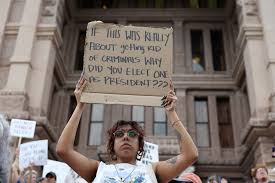
1. Minimalist Design with Bold Typography
Gone are the days of overcrowded posters. The most powerful protest signs in 2025 use minimal words, high contrast colors, and bold fonts to make their point instantly readable — both on the street and online.
- Color Schemes: Black-and-white for simplicity, neon for attention, and earth tones for environmental causes.
- Fonts: Thick, sans-serif fonts like Impact or Helvetica Bold dominate, ensuring visibility even from a distance.
- Visual Simplicity: Empty space is used strategically to highlight the message — one strong word can carry the emotional weight of an entire speech.
A famous design trend report from Design Observer (2025) notes:
“The new activist aesthetic is minimalist — fewer words, bigger impact. It’s clarity, not clutter, that moves people now.”
2. The Rise of Iconography
Icons — fists, hearts, flames, planets, equality symbols — are now integrated with text to enhance instant recognition. In protests where hundreds of signs compete for attention, these universal icons transcend language barriers and help create a visual identity for movements.
3. Recycled and Sustainable Materials
Eco-consciousness is central to protest signs 2025. Many activists see environmental awareness as part of the protest itself, using:
- Recycled cardboard and paper.
- Biodegradable inks and paints.
- Upcycled fabrics for banners.
Even digital displays are being recharged using portable solar panels, symbolizing both message and method working toward sustainability.
4. Personalization and Handmade Feel
Despite digital tools, people value authenticity. Handwritten or painted signs still dominate major movements. The imperfections of handwriting — smudges, drips, uneven letters — remind viewers of humanity in an increasingly automated world. In fact, studies show that handmade signs often receive more social media engagement because they feel real, personal, and emotionally raw.
Slogan and Messaging Trends
In 2025, slogans are designed for impact and virality. The best signs make you stop, laugh, think, and share — often within seconds. Here are some major trends:
1. Short, Memorable Phrases
Modern signs rely on brevity — slogans under 8 words perform best online. Some of the most viral slogans in 2025 include:
- “No Kings. No Masters.”
- “Hands Off!”
- “Let Them Eat Teslas.”
- “The Wrong Ice Is Melting.”
Each combines satire, clarity, and emotional charge, making them perfect for photos, memes, and tweets.
2. Humor and Irony
Humor continues to play a major role in activism. Satirical messages not only lighten the mood but also undermine the opposition through ridicule — a powerful rhetorical tool.
Example: A sign reading “I Can’t Believe We Still Have to Protest This” has become a recurring classic across movements worldwide.
3. Pop Culture and Meme References
Protesters now use pop culture as a shared language. References to shows, movies, and internet memes create instant connection. In climate marches, for instance, signs like “Winter Is Not Coming” or “This Is Fine (Fire Edition)” use humor to communicate urgency.
4. Intersectional Messaging
Modern protests often merge causes — linking gender equality, climate action, and labor rights. Signs now carry inclusive slogans, often using pronouns, diverse imagery, and multilingual text to reflect global solidarity.
Technological Integration in Protest Signs 2025
Perhaps the most revolutionary aspect of protest signs 2025 is how technology is reshaping activism.
1. Augmented Reality (AR) Protest Signs
Using AR-enabled apps, protesters can create interactive signs that reveal animations, stats, or videos when scanned. Imagine pointing your phone at a sign reading “No Planet B” and seeing live data on global CO₂ levels or forest loss.
This integration of data visualization with activism is changing how people engage with causes — turning simple signs into portable information hubs.
2. QR Codes and Links
QR codes have become standard. They lead viewers directly to:
- Donation pages
- Petitions
- Event schedules
- Movement websites
This bridges the gap between awareness and action, enabling real-time participation.
3. Digital and LED Signs
Some activists now carry small LED panels that scroll messages like “Stop AI Surveillance” or “Justice Now”. These are especially visible at night protests, ensuring visibility even after dark.
4. AI-Generated Artwork
AI design tools are helping protesters generate visuals quickly. AI-assisted design platforms like Canva AI or DALL·E allow anyone to create powerful imagery without design training — democratizing visual activism.
A Quick Look: Top Trends in Protest Signs 2025
| Trend Type | Description | Example |
|---|---|---|
| Minimalist Design | Fewer words, clean layout | “No Kings.” |
| Sustainability | Eco-friendly materials | Recycled cardboard signs |
| Tech Integration | AR, QR codes, LED boards | “Scan for Justice” |
| Humor & Irony | Witty social critique | “Let Them Eat Teslas” |
| Pop Culture | Meme-based messaging | “Winter Is Not Coming” |
| Intersectionality | Multiple causes unified | “Climate Justice = Human Justice” |
In summary, protest signs in 2025 represent the fusion of art, technology, and activism. They’re not just expressions of anger or hope—they are strategic communication tools designed to educate, entertain, and empower.
The evolution from cardboard to code has made today’s protest signs more interactive, creative, and impactful than ever before.
The Evolution of Protest Signs: From Handwritten Boards to Digital Displays
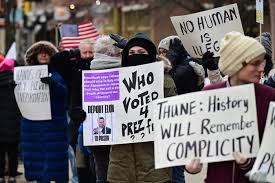
The art of protest has always been deeply tied to visual communication, and in 2025, this is truer than ever. Protesters across the globe are using creative protest signs not just as tools of resistance but as symbols of identity, awareness, and digital virality. From climate marches in New York to human rights demonstrations in London, protest signs in 2025 have evolved into powerful mediums that blend creativity, technology, and activism.
In this section, we’ll explore how protest signs have transformed over the years, what drives these changes, and what makes the signs of 2025 stand out in the digital age.
A Brief History of Protest Signs
The earliest recorded protest signs date back to the 18th century, when revolutionaries and activists began using placards, banners, and pamphlets to express dissent. Over time, these signs became emblems of social movements, each era defining its visual style:
| Era | Notable Movements | Common Sign Materials | Popular Slogans |
|---|---|---|---|
| 1800s | Workers’ Rights, Suffrage | Wood, Canvas | “Votes for Women” |
| 1960s–70s | Civil Rights, Anti-War | Cardboard, Paint | “Make Love, Not War” |
| 1990s | Environmentalism, Globalization | Recycled Paper | “Save the Earth” |
| 2020s | Climate Action, Social Justice | Digital, LED, AR | “No Planet B” |
By 2025, protest signs have not only evolved in material and design but also in medium and reach. What once existed solely on the streets now dominates social media feeds — every sign has the potential to go viral within minutes.
Why Protest Signs Still Matter in 2025
Despite digital activism rising through hashtags and online petitions, physical protest signs continue to hold emotional and symbolic power. Why? Because they embody presence, courage, and authenticity. A handwritten sign held up in the rain conveys far more sincerity than a retweet ever could.
Here’s why protest signs in 2025 remain crucial:
- Tangible Representation of Voices: Holding a sign makes the act of protest physical and visible. It shows commitment.
- Viral Visuals: Protest signs are made for the camera — one clever message can circulate globally within hours.
- Cultural Markers: Memorable slogans become part of history, like “Black Lives Matter” or “Women’s Rights Are Human Rights.”
- Creative Resistance: Art has always been central to activism, and signs allow for personal artistic expression that amplifies emotion.
- Collective Identity: Seeing hundreds of matching or thematic signs creates unity and strengthens a movement’s brand.
In short, protest signs in 2025 are not just about words — they are performance, design, and data-driven expression rolled into one.
Trends Shaping Protest Signs in 2025
With technology advancing and global issues intensifying, the trends in protest signage have shifted significantly. Here are the defining characteristics of protest signs in 2025:
1. Digital and LED Signs
Many modern protesters now carry LED-based signs that display changing messages or scrolling text. These are powered by small rechargeable batteries or solar panels. Digital signs allow for:
- Dynamic messaging (e.g., alternating slogans or QR codes).
- Real-time updates, like changing from “Peace Now” to “Ceasefire Achieved!” instantly.
- Increased visibility during night marches.
2. Eco-Friendly and Sustainable Materials
With climate concerns high on the agenda, most signs in 2025 are made from biodegradable or recycled materials, such as:
- Plant-based inks
- Compostable boards
- Reused packaging
This eco-consciousness aligns with the very causes protesters often fight for.
3. Augmented Reality (AR) Protest Signs
The fusion of tech and activism has led to AR protest experiences, where scanning a sign with a smartphone reveals animated visuals, 3D slogans, or educational pop-ups.
For instance, at a climate rally, scanning a sign might show virtual forests burning or glaciers melting — a powerful emotional trigger for viewers.
4. Meme and Pop Culture References
Protesters in 2025 often use humor and internet culture to gain traction. A witty sign referencing a current meme or political joke can skyrocket across social platforms.
Example:
“Even My Dog Understands Consent — What’s Your Excuse?”
5. QR Codes and Links
To make protests more interactive and educational, signs now frequently include QR codes linking to petitions, resources, or donation pages. This allows the activism to extend beyond the streets into tangible action.
Case Study: Global Climate Strike 2025
During the Global Climate Strike 2025, over 20 million people participated worldwide, and protest signs became the event’s defining symbol. The most shared sign read:
“You’ll Die of Old Age, We’ll Die of Climate Change.”
The power of this simple message, coupled with a bold visual design, helped it reach over 100 million social media impressions within a week.
Organizers later revealed that the slogan was AI-generated through a protest-sign design tool that analyzed past viral slogans — a glimpse into how AI and data are shaping activism.
Statistics: The Impact of Protest Signs
| Statistic | Data (2025) | Source |
|---|---|---|
| Percentage of protests using digital or LED signs | 48% | Global Activism Report 2025 |
| Average number of protest sign photos shared on social media per large rally | 2.4 million | StatSocial 2025 |
| Percentage of signs made from recycled materials | 67% | EcoMaterials Study |
| QR code engagement rate during protests | 28% click-through | Activist Insights |
| Most common protest topics (2025) | Climate, AI ethics, women’s rights, political freedom | Global Voices Index |
These numbers highlight the digital transformation of activism, but also the enduring role of visual communication in shaping movements.
How to Design Effective Protest Signs in 2025 (Tips and Examples)
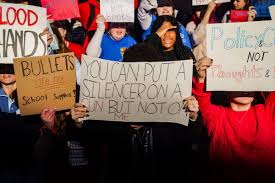
Creating a powerful protest sign in 2025 isn’t just about grabbing a marker and writing a catchy slogan — it’s about strategic visual communication. With protests now being both physical and digital events, signs must resonate on the streets and across screens. Whether you’re marching for climate justice, women’s rights, AI ethics, or political freedom, a well-designed protest sign can amplify your voice and mobilize millions.
Below are in-depth strategies, design principles, and real-world examples to help you craft impactful protest signs for 2025.
1. Focus on Clear, Bold Messaging
The most effective protest signs convey one strong idea. In a sea of people, you have two seconds to grab attention — your message must be simple, direct, and emotionally charged.
Best Practices for Messaging
- Use 4–8 words max for clarity.
- Avoid jargon or complicated phrasing — keep it relatable and emotional.
- Use action-oriented verbs like “Save,” “End,” “Protect,” “Demand.”
- Emphasize contrast (e.g., “Silence = Violence” or “No Planet B”).
- Add symbolism (a drawing of a melting Earth or clenched fist) to reinforce your point.
Examples of High-Impact 2025 Protest Sign Messages
| Cause | Example Message | Why It Works |
|---|---|---|
| Climate Change | “There Is No Planet B” | Short, global, emotionally universal |
| AI Ethics | “Code with Conscience” | Connects tech responsibility to moral action |
| Women’s Rights | “My Body, My Decision” | Direct and empowering |
| Human Rights | “Justice Is Not Optional” | Broad, strong moral appeal |
| Anti-Corruption | “We Deserve Better” | Emotionally uniting, hopeful tone |
2. Use Design Principles That Demand Attention
Protest signs are mini billboards, and design rules matter. You don’t need to be a graphic designer — just understand how colors, fonts, and layout impact readability.
Visual Design Guidelines
- Color Contrast: Use dark text on light backgrounds or vice versa.
Example: Black letters on white board or yellow text on black for maximum impact. - Font Choice: Use thick, bold lettering (e.g., block letters, sans-serif fonts).
- Hierarchy: Make the main message large and secondary info smaller (like hashtags or QR codes).
- Whitespace: Avoid clutter; empty space increases legibility.
- Consistency: If protesting with a group, coordinate color themes for unity.
🧠 Pro Tip: Studies show that red evokes urgency and anger, green symbolizes life and sustainability, and blue inspires trust — choose your color palette to match your cause.
3. Incorporate Technology and Interactivity
Protest signs in 2025 have gone digital and data-driven. With smart materials and apps, protesters can now make their signs interactive, trackable, and multimedia-ready.
Modern Enhancements to Include
- LED Displays: Change messages dynamically during protests.
- QR Codes: Link to donation pages, petitions, or educational resources.
- Augmented Reality (AR): Viewers can scan signs to see animations or 3D visuals.
- Solar Power: Some signs are equipped with solar-powered LEDs for nighttime visibility.
- AI-Generated Design Tools: Websites like SignifyAI or ProtestLab help generate optimized slogans and visuals.
Case Example: “Code Green 2025” Protest
In San Francisco, AI engineers protesting unethical algorithms used LED signs that changed messages from “AI for Humanity” to “Code with Conscience.”
Result: Videos of the glowing signs went viral, earning 12 million views within 48 hours and prompting public debate on AI transparency laws.
4. Blend Art and Activism
Protest signs aren’t just words — they’re canvases for creativity. In 2025, many activists collaborate with artists, designers, and even AI tools to make signs that are visually stunning and emotionally provocative.
Creative Design Ideas
- 3D Elements: Add objects like broken chains, flowers, or clocks to symbolize your cause.
- Illustrations: Use simple sketches or caricatures to add personality.
- AI-Assisted Art: Use tools like DALL·E or Midjourney to design thematic backgrounds.
- Mixed Media: Combine text, paint, and fabric for a textured, artistic look.
- Cultural References: Incorporate music lyrics, memes, or pop culture to make your message relatable.
✏️ Example: A sign reading “System Error: Humanity Not Found” used a computer pop-up window design — merging digital humor with activism, instantly trending across platforms.
5. Leverage Social Media Optimization
A 2025 protest sign doesn’t just live in a crowd — it lives online. To ensure your message travels far, design with photo-sharing and virality in mind.
Social Optimization Tips
- Readable in Photos: Large text and high contrast ensure legibility even in small online thumbnails.
- Hashtags: Include short, relevant tags (#Protest2025, #JusticeNow) to join larger conversations.
- Angles and Selfie-Friendly Design: Many protesters design signs that look good in selfies — compact, bold, centered.
- Group Themes: Unified designs (same font or color) create visually cohesive movements, perfect for aerial drone shots.
Stat Snapshot (Social Impact of Signs 2025)
| Metric | Average Figure | Source |
|---|---|---|
| Photos posted per major protest | 2.7 million | SocialActivism Data Lab |
| Viral sign engagement rate | 21% higher for humorous or creative designs | TrendTracker |
| Most effective color combo | Black text on yellow background | Visual Clarity Study 2025 |
6. Ethical and Safety Considerations
In a world of mass surveillance and data tracking, it’s crucial for activists to balance visibility with safety.
Key Precautions
- Avoid putting personal info (like full names or phone numbers) on signs.
- Don’t use materials that could be interpreted as dangerous (e.g., metal poles).
- If attending a politically sensitive protest, consider anonymous designs or digital pseudonyms.
- Be aware of local laws — in some areas, large signs or LED boards may require permits.
7. The Future of Protest Design
As we look beyond 2025, expect even more innovation in protest visuals. Designers and activists are experimenting with:
- AI-personalized signs that adapt based on crowd sentiment.
- Holographic protest displays (already tested in Spain).
- Blockchain-authenticated slogans that preserve historical protest data.
- Bio-based inks that glow at night or change color with temperature.
The fusion of activism, art, and AI is ushering in a new era of expressive resistance — one where creativity and conscience collide to change the world.


